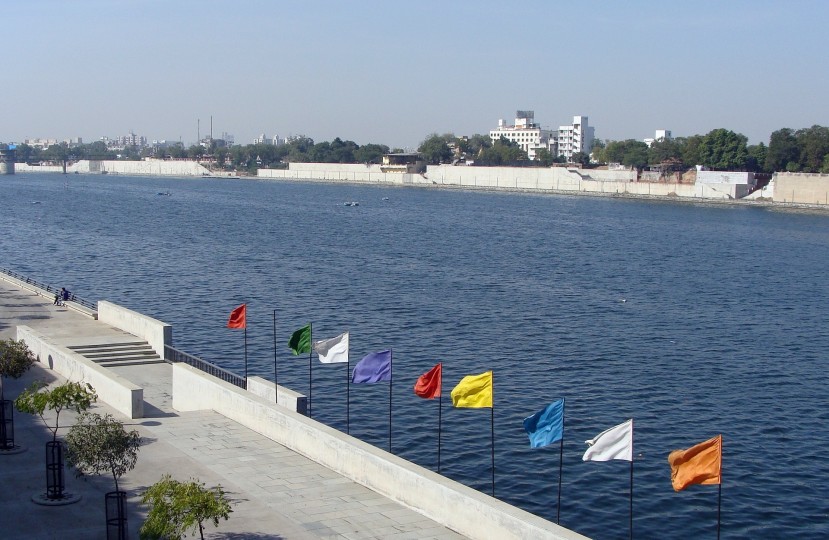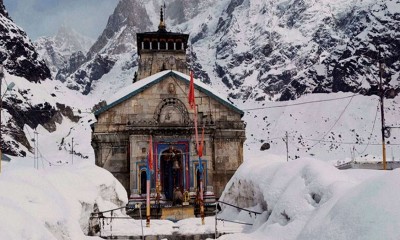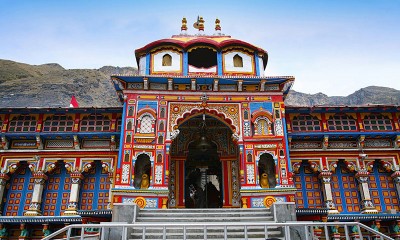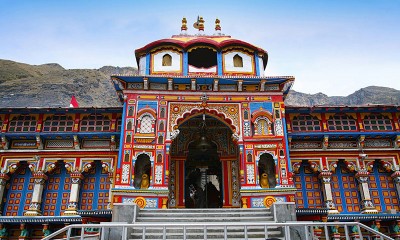
Gujarat has been on the top of travel bucket list for travel lovers. The beautiful Kutch attracts a lot of visitors from all over the world. One of the world’s largest white deserts; India’s longest coastline; country’s largest habitat of Asiatic lions and first marine national park of India are all located in Gujarat. There is so much to see in this state that even a month holiday from office won’t be enough, but this doesn’t stop you from exploring new places.
Gujarat has been on the top of travel bucket list for travel lovers. The beautiful Kutch attracts a lot of visitors from all over the world. One of the world’s largest white deserts; India’s longest coastline; country’s largest habitat of Asiatic lions and first marine national park of India are all located in Gujarat. There is so much to see in this state that even a month holiday from office won’t be enough, but this doesn’t stop you from exploring new places. We're listing a few of them down below.
1. Gir National Park, Junagadh
Gir National Park is a sparkling diamond in the jewels of Gujarat. This dry deciduous forest is home to more than 300 avian species like lions, great horned owl, crested serpent eagle and other members of the cat family like leopards. Going by the records of the forest department, there are 33 species of mammals, 29 species of reptiles, 93 species of invertebrates, 96 trees, and 448 flowering plants. Also, the national park is recognized for its silk cotton trees. Best time to go for jeep safari at Gir National Park is between mid of March and May.
2. Dwarkadhish Temple

Dwarkasheesh is one of the four Dhams (divine abodes of India) and Sapata Turis. The word ‘Dwarka; is made of two words- ‘dwara’ meaning road, and ‘ka’ implying eternal significance. Going by the mentions in the epic Mahabharatha, Dwarka was the kingdom of Lord Krishna, and he stayed there for quite an extended period. This five storey temple stands on 72 pillars, which according to the science of archeo-astronomy, is some immense significance. The sandstone plinth and walls of the temples are embellished with musicians and celestial beings, panels depicting dancers, elephants. Along with Jagat Mandir, you can also visit the nearby temples like Bet Dwarka, Okha, and shrines dedicated to Rukmini (Lord Krishna’s Wife), Mirabai, Narsinh Mehta and Shank Narayan.
3. White Desert – Great Rann of Kutch

Great Rann of Kutch is reputed to be the world’s largest white salt desert. Spanning over an area of 7505 sq km in the western part of Gujarat, the desert shines like a diamond under the scorching sun and appears like an eerie under the bluish glow during the night hours. To experience the best of the white desert, one should visit there during the Rann Utsav, which happens between November and March. On a visit to the white desert, do not forget to experience the camel safari. Many villages nearby Kutch like Hodko, Nirona, Mandvi and Bhujodi, has hotels and resorts where you can book a stay when on a trip to Kutch.
4. Somnath Temple

Somnath temple is located in the small town of Gujarat’s Junagarh district, a primary shrine amongst the 12 Jyotirlingas of Lord Shiva. One of the most expensive aartis, costing approximately 15 lakhs is carried out here. The shivlinga at the temple is believed to be ‘swayambhu’ or self-born, manifested in the temple. Locals call this temple as ‘shrine eternal’ because it has withstood the test of time; it was destroyed six times and every time it was rebuilt. The current structure of the temple, seventh reconstruction, is a magnificent edifice built in the Chalukya style of architecture by the master masons of Gujarat, known as Sompuras.
5. Champaner-Pavagadh Archaeological Park, Gujarat

The deserted city of Champaner is a UNESCO world heritage site. It is located in the foothills of Pavagadh. The Champaner complex is hardly 50 km away from Vadodara, thus, can be a good option for a weekend gateway. With some area on a rocky hilltop with forts, mosques, temples, and palaces, Champaner-Pavagadh Archaeological Park looks like something out of a children’s storybook when it’s seen from afar. A major part of Champaner lies in ruins today, with the remains of many old mosques and palaces. Kevda Masjid and Cenotaph, Jami Masjid, Lila Gumbaj Ki Masjid, Pavagadh Fort, Lakulisa temple, and Helica Step-well, are some of the famous places to visit in Champaner-Pavagadh Archaeological Park. Also here you can find many Chalcolithic Indian Sites from the stone age era.
6. Sabarmati Ashram, Ahmedabad

Originally called Satyagraha Ashram, Sabarmati is Mahatma Gandhi’s second ashram (first being the Kochrab Ashram) where he planned a significant number of freedom movements between 1917 to 1930. One can find a special mention of Sabarmati Ashram in the archives of India as here Mahatma Gandhi trained activist to join his movements like Swadeshi movements, non-violent and civil disobedience. Gandhi’s poignant, spartan living quarters are preserved in Sabarmati Ashram, and there’s an open-air museum that presents an informative and moving record of his life and teachings.
7. Sun Temple, Modhera

Built-in 1027 AD, Sun temple is one of the surviving Indian shrines dedicated to God Sun and stands as an epitome of the exquisite Hindu temple of Solanki dynasty. Sun temple is located in the Mehsana district of Gujarat, and one can reach by car or bus ride from Ahmedabad. The temple is divided into three parts, which are perfectly aligned from east to west, in accordance with the deity passage of the sun. Inside the temple complex, you can see a stepwell, prayer hall (also known as Sabhamandapa) supported on 52 pillars and another room that leads to inner sanctum called Garbhagrah. The temple is a sight to behold during the Modhera Dance Festival.
8. Akshardham Temple, Gandhinagar

Akshardham temple is sacred to Lord Swaminarayan, who belongs to Vaishnav tradition and believes that salvation can be reached by the total devotion of supreme God by exercising righteousness, knowledge, and detachment. It was established in the year 1992. Set up in an area of over 23 acres, the temple complex serves as a place for education and entertainment. The highlight of the temple is its architecture built of 6000 tons of pink sandstone and not event cement or steel has been used in its construction. The main hall of the temple enshrines 7 feet tall idol of Lord Swaminarayan. A treat to the eyes of architecture lover, Akshardham is one of the magnificent architectural heritage of Gujarat.
9. Marine National Park, Jamnagar

Along the western edges of Gujarat there is a 1600 km long coastline, which is perhaps the largest in India. In this long coastline, there is a tiny reserve called Marine National Park, which is one of its kinds in India, on the Gulf of Kutch. It’s the only place in India where one can see the coral reefs of different shapes and sizes without diving in the water. Some of the finest marine species that can be found in the national park are sponges, starfishes, sea cucumbers, puffer fishes, sea horses, huge green sea turtles, etc. Also, you can see many sea birds like cranes, flamingos, sea gulls, etc. To reach the marine national park, you will have to hire a boat from the Bedi Port or Sikka Port. The local boat takes one and a half hours to reach the main park.
10. Palitana Jain Temple, Bhavnagar

Palitana temple is one of the most sacred Jain temples in India and is known for its 3000 brilliantly carved temple. It is located atop of Shetrunjai Hill. It is believed that the first Jain Tirthankara, Adinath, is visited this hill while his chief disciple Pundarika attained enlightenment here. According to the records, there are approximately 108 large temples and 872 small shrines with about 7000 images total that have been built over 900 years from the 11th century by the Jain community. To reach the temple, one will have to climb 3800 steps. For the elder, palanquin (palki) service are easily available.
11. Junagadh Buddhist Cave Groups

Carved out of Monolithic Rock, this 2000-year-old three-tiered monument is not a cave but the three separate rooms to be used as the monks quarters. Khapra Kodiya Caves, Baba Pyare Caves, and Uperkot Caves are these three different rooms. The so-called caves are believed to have been created during the reign of Emperor Ashoka and are regarded as earliest monastic settlements in the area.







